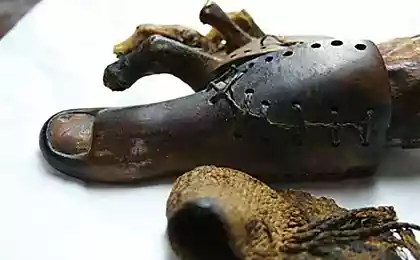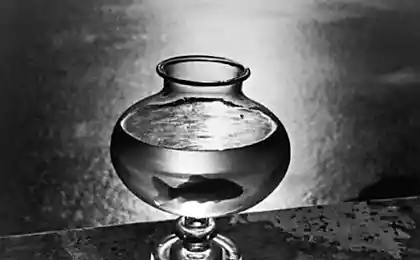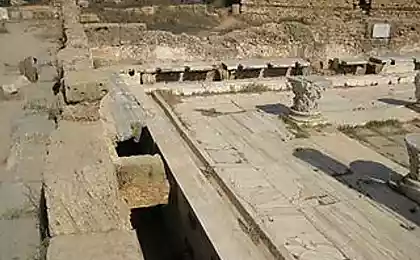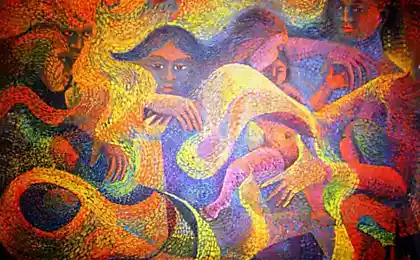647
Public toilets is not only in humans
In animals, they are called "spot of defecation" 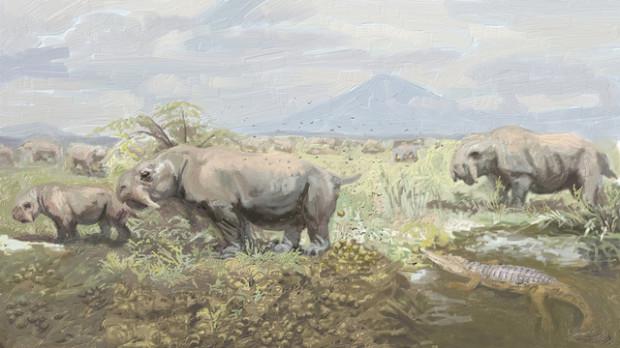
People - not the only creatures that have public toilets, many animals also create them. A new study shows that such behavior is evidence of evolutionary development: for example, a reptile the size of a rhinoceros that lived about 240 million years ago, defecated in the "public toilets».
Public toilets or defecation spots - this is a relatively small site, where defecate several creatures, sometimes simultaneously. In addition to humans and domestic cats have public toilets lemurs, meerkats, monkeys and tiger cats, and large herbivores such as elephants, horses and rhinoceroses.
Without public toilets sanitation would stand a much sharper, especially when you consider that at the present time on the planet lives about seven billion people. For animals such places have important biological functions, for example, are territorial markers or prevent infestation.

Paleontologist Martin Hechenleytner argues that the fossils that confirm the presence of the ancient spots defecating animals find quite difficult. Recently, scientists have found in the northwest of Argentina, eight public toilets, an area that ranged from 400 to 900 m², and are located about 1, 5 km from each other. On the grounds are found fossilized animal droppings, called coprolites.
According Hechenleytnera, coprolites easily distinguished from other fossils: they are almost perfectly round shape, and, as a rule, small cracks on the surface. Some found coprolites reached 35 cm in diameter. Researchers cut some fossils for examination under a microscope and found in them a lot of tiny fragments of vegetation, confirming that the coprolites owned large herbivores.
Scientists found out that the most likely public toilets used dicynodonts - one of the largest herbivorous Triassic period of up to three tons. This means that the animals have started to create spots defecation around 220 million five years ago, people went to this aspiration from very distant ancestors. Perhaps it is an integral part of the process of evolution.
via factroom.ru

People - not the only creatures that have public toilets, many animals also create them. A new study shows that such behavior is evidence of evolutionary development: for example, a reptile the size of a rhinoceros that lived about 240 million years ago, defecated in the "public toilets».
Public toilets or defecation spots - this is a relatively small site, where defecate several creatures, sometimes simultaneously. In addition to humans and domestic cats have public toilets lemurs, meerkats, monkeys and tiger cats, and large herbivores such as elephants, horses and rhinoceroses.
Without public toilets sanitation would stand a much sharper, especially when you consider that at the present time on the planet lives about seven billion people. For animals such places have important biological functions, for example, are territorial markers or prevent infestation.

Paleontologist Martin Hechenleytner argues that the fossils that confirm the presence of the ancient spots defecating animals find quite difficult. Recently, scientists have found in the northwest of Argentina, eight public toilets, an area that ranged from 400 to 900 m², and are located about 1, 5 km from each other. On the grounds are found fossilized animal droppings, called coprolites.
According Hechenleytnera, coprolites easily distinguished from other fossils: they are almost perfectly round shape, and, as a rule, small cracks on the surface. Some found coprolites reached 35 cm in diameter. Researchers cut some fossils for examination under a microscope and found in them a lot of tiny fragments of vegetation, confirming that the coprolites owned large herbivores.
Scientists found out that the most likely public toilets used dicynodonts - one of the largest herbivorous Triassic period of up to three tons. This means that the animals have started to create spots defecation around 220 million five years ago, people went to this aspiration from very distant ancestors. Perhaps it is an integral part of the process of evolution.
via factroom.ru
Impostor syndrome - when the man thinks that his success he did not deserve
Why are you growling stomach when you're hungry

